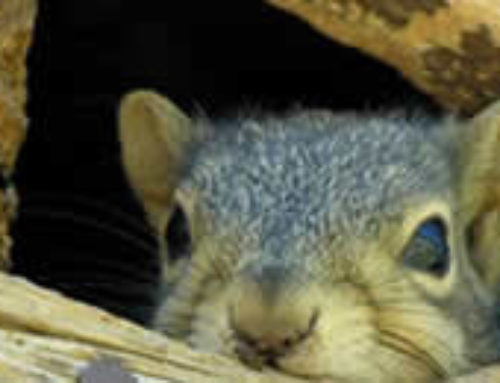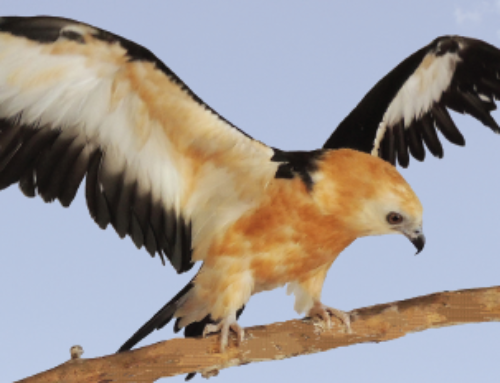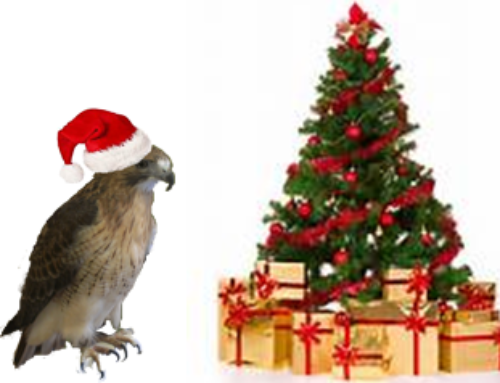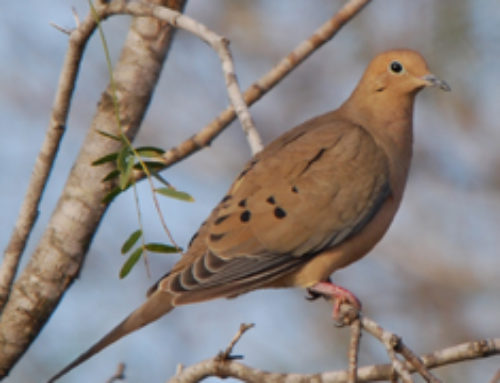Injured adult doves and young are quite plentiful right now at the Wildlife Center. Most folks are familiar with the haunting call of the Mourning Dove and can pick it out at (under) the birdfeeder. But the Houston area is home to a total of four different species. All doves start life as “ugly ducklings” covered in dingy white down and a disproportionately large beak. Pigeons belong to the same family as the dove and are sometimes called Rock Doves.
The most common dove in the greater Houston is the Mourning Dove, but the White Wing Dove is quickly becoming a fixture in our backyards. Rare until 5 -7 years ago, they were usually seen only when migrating to or from breeding grounds in Mexico and Central America. These days they are frequent year-round visitors. They look very similar to Mourning Doves, but they are much bigger and at rest, you can see the white band that outlines the leading edge of the wing. (Note the white feathers are already emerging on the nestling below)
Doves make sloppy haphazard nests that often fall apart before the babies have fully fledged. Therefore, baby doves are one of the most common species seen at the Wildlife Center. Every effort should be make to encourage the parents to care for the nestling/fledgling. Place the baby in an empty hanging basket, bucket (with holes punched in the bottom) or box (ditto about holes in the bottom). Paper towels can be wadded up to form a faux- nest. Observe at a distance to see if the baby is being cared for.
Dove are one of the more difficult bird species to raise. This is because the parents feed their young by putting their beak deeply into the baby’s mouth and transferring food directly from their crop. This is called “crop milk” and is produced by specialized fluid-filled cells from the lining of the crop. To simulate the method and type of food, rehabilitators’ must mix a slushy formula and place it directly into the baby’s crop with a tube. Rehabilitators that are very experienced with “tubing” find it a fast and easy method of feeding, but it is not an easy technique to master.










Leave A Comment